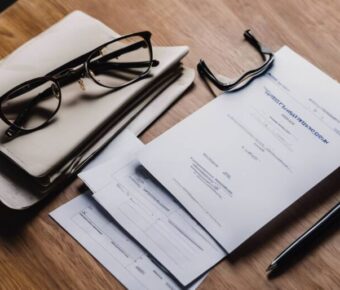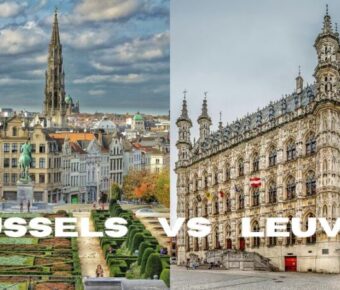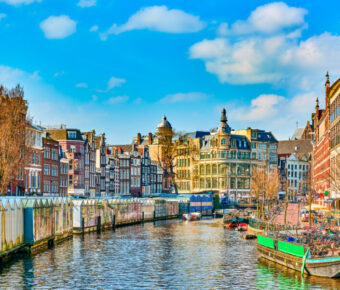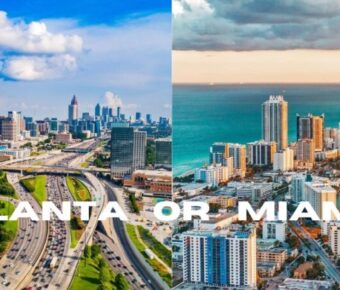
Is Paris Safe? 5 Insider Tips for a Worry-Free Visit to the City of Light
Paris, the City of Light, captivates millions of visitors each year with its iconic landmarks and romantic atmosphere. But is it safe to explore? While Paris is generally a safe city for tourists, travelers should stay alert and take basic precautions. Like any major metropolis, petty crime can be an issue, especially in crowded tourist areas.

Pickpocketing is the main concern for visitors, so keep a close eye on your belongings. Stick to well-lit areas at night and be aware of common scams targeting tourists. The metro is generally safe but can get crowded, so stay vigilant.
Despite occasional reports of civil unrest or terrorism fears, violent crime against tourists is rare in Paris. Using common sense and staying aware of your surroundings, you can have a magical time exploring this beautiful city without worry. Just remember – caution goes a long way in ensuring a safe and memorable Parisian adventure.
Contents
- Understanding Safety in Paris
- Overview of Paris as a Tourist Destination
- Crime Rates and Types of Crime
- Personal Safety Tips and Best Practices
- Avoiding Pickpockets and Theft
- Handling Scams and Common Frauds
- Safety Tips for Solo Travelers
- Navigating Parisian Transport Safely
- Using the Metro and Public Transport
- Travel Advisories for Airports and Stations
- Driving and Traffic Concerns
- The Impact of Social Issues on Safety
- Demonstrations and Civil Unrest
- Risk of Terrorist Attacks
- The Reality of Suburban Safety
- Cultural Insights to Enhance Safety
- The Local Approach to Safety and Security
- Cultural Norms and Environmental Awareness
- Tourist Attractions and Relative Safety
- Safety Around Iconic Landmarks
- Staying Safe While Enjoying Parisian Culture
- Shopping and Dining: Keeping Valuables Secure
- Accommodations and Neighborhood Safety
- Choosing the Safest Places to Stay
- Identifying and Avoiding Dangerous Areas
- Environmental Factors and Natural Events
- Dealing with Weather and Natural Disasters
- Emergency Preparedness and Responses
- Planning Your Parisian Visit
- Best Time to Visit for Optimal Safety
- Understanding Local Health and Safety Standards
- Frequently Asked Questions
- What precautions should one take when traveling in Paris?
- How does the safety of Paris compare to other major cities like New York?
- In what ways can solo female travelers ensure their safety in Paris?
- Are there any specific areas of Paris that are safer to reside in?
- How has Paris addressed safety concerns regarding terrorism in recent years?
- What are the best practices for exploring Paris safely after dark?
- More Travel Guides
Understanding Safety in Paris

Paris is a beautiful city, but like any major tourist destination, it has its share of safety concerns. Visitors should be aware of potential risks while still enjoying all the city has to offer.
Overview of Paris as a Tourist Destination
Paris welcomes millions of tourists each year. The City of Light dazzles with iconic landmarks like the Eiffel Tower and Notre-Dame. Visitors flock to its world-class museums, charming cafes, and elegant boulevards.
But crowds can attract pickpockets and scammers. Tourists should stay alert, especially in busy areas. The Metro is generally safe but can get crowded during rush hour.
St Germain is a good neighborhood for families. It’s central, safe, and close to attractions. The 6th arrondissement offers a taste of Parisian life without too many tourist traps.
Crime Rates and Types of Crime
Paris has moderate crime rates compared to other big cities. Violent crime is relatively rare. Petty theft is the biggest problem for tourists.
Pickpocketing happens often in crowded spots. Thieves target distracted visitors near major sights. Scams like the “gold ring trick” also target tourists.
Terrorism remains a concern, though attacks are very rare. The city has increased security at popular sites. Visitors may notice armed patrols at attractions.
Assaults and robberies do occur but aren’t common in tourist areas. It’s best to stay aware of surroundings, especially at night. Using official taxis or ride-shares is safer than unlicensed cabs.
Personal Safety Tips and Best Practices

Staying safe in Paris means being smart and aware. A few simple tricks can help you avoid trouble and enjoy the city worry-free. Let’s look at some key ways to protect yourself and your stuff.
Avoiding Pickpockets and Theft
Pickpockets love crowded tourist spots in Paris. Keep your wallet in your front pocket and hold bags close to your body. Don’t flash expensive stuff like phones or jewelry. Be extra careful on the Metro and near big attractions.
Use a money belt under your clothes for important things. Leave valuables in your hotel safe when you can. If someone bumps into you, check your pockets right away.
Thieves sometimes work in teams to distract you. One might ask for directions while another grabs your bag. Stay alert if strangers approach you suddenly.
Handling Scams and Common Frauds
Watch out for people trying to tie a string on your wrist near Sacré-Cœur. They’ll demand money to remove it. Just say “non merci” and walk away.
Be wary of petition scams too. People may ask you to sign for a fake charity. It’s often a trick to distract you while someone else steals from you.
Avoid people offering to “find” a gold ring on the ground. They’ll try to sell it to you, but it’s fake. Don’t fall for deals that seem too good to be true.
If someone claims to be a plainclothes cop and asks to see your wallet, it’s probably a scam. Real police will show official ID.
Safety Tips for Solo Travelers
Solo travelers should trust their gut. If a situation feels off, leave. Let your hotel know your plans each day. Stay in touch with folks back home regularly.
Stick to well-lit, busy areas at night. Take official taxis or use reliable ride-share apps. Avoid walking alone late at night, especially after drinking.
Make copies of important documents like your passport. Keep one set with you and leave another at your hotel. Consider travel insurance for extra peace of mind.
Learn a few basic French phrases. Locals often appreciate the effort, and it can help in tricky situations. Don’t be afraid to ask for help if you need it.

Getting around Paris can be tricky, but with a few tips you’ll be zipping through the city like a local. The metro is fast and easy, but keep your wits about you. Airports and train stations need extra care too. And if you’re brave enough to drive, watch out for those crazy roundabouts!
Using the Metro and Public Transport
The Paris Metro is a quick way to get around, but stay alert. Keep your belongings close, especially in crowded cars. Pickpockets love tourists! Avoid empty cars late at night. Stick to well-lit areas in stations.
Buses are great for seeing the city. If you’re nervous, sit near the driver. Trams are safe, too; just watch for traffic when crossing tracks.
Buy a multi-day pass to save money and time. It works on metros, buses, and trams. Don’t forget to validate your ticket!
Pro tip: Download a metro app. It’ll help you plan routes and avoid getting lost.
Travel Advisories for Airports and Stations
Paris airports are busy places. Charles de Gaulle and Orly can be overwhelming. Arrive early to avoid stress. Keep an eye on your luggage at all times.
Gare du Nord is Europe’s busiest station. It’s safe but crowded, so watch your stuff in lines and on platforms.
Use official taxis or ride-shares from designated areas. Ignore offers from random people. They might be scams.
Pickpockets love transportation hubs. Keep valuables hidden and bags zipped. Be extra careful on airport trains and in ticket areas.
Driving and Traffic Concerns
Driving in Paris? Brave soul! Traffic is crazy and parking’s a nightmare. Avoid rush hours if you can.
Roundabouts are wild, especially the Arc de Triomphe. Yield to cars already in the circle. Use your turn signals!
Watch for scooters and bikes. They zip in and out of traffic. Pedestrians sometimes jaywalk too.
Parking on the street is tough. Look for underground garages instead. They’re pricey but safer.
Consider renting a bike or scooter instead. It’s fun and you’ll skip traffic jams. Just wear a helmet and follow traffic rules.
The Impact of Social Issues on Safety
Paris faces some unique safety challenges tied to its social and political landscape. These issues can affect visitors in different ways, though the risks are often overblown in media reports.
Demonstrations and Civil Unrest
The French love a good protest. It’s part of the national culture. You’ll often see marches or strikes in Paris, especially on weekends. Most are peaceful, but some can turn rowdy.
Big gatherings happen at spots like Place de la République or Bastille. If you see a crowd forming, it’s best to steer clear. Tear gas is sometimes used to break up unruly protests.
Transport strikes can also occur and mess with your plans. Metros and buses might stop running without much warning. It’s smart to have a backup plan for getting around.
Risk of Terrorist Attacks
Sadly, Paris has been a target for terrorists in the past. The city stays on alert, with soldiers patrolling tourist areas. You’ll spot them at the Eiffel Tower and other famous places.
The chance of an attack during your visit is very slim. But it’s good to stay aware of your surroundings. If you see anything suspicious, tell the police.
Some safety tips:
- Know where emergency exits are in buildings
- Have a meetup spot if your group gets separated
- Save local emergency numbers in your phone
The Reality of Suburban Safety
Paris suburbs get a bad rap, but the reality is more nuanced. Some areas can be rough, while others are perfectly safe.
Places to be extra careful include parts of Seine-Saint-Denis and around Gare du Nord at night. But don’t write off all suburbs. Many are fine for a visit.
If you’re nervous, stick to daytime trips to suburban sights. The Palace of Versailles is in a suburb and totally safe. Same goes for Disneyland Paris.
Remember, millions live in these areas. They’re not all dangerous. Just use common sense, like you would in any big city.
Cultural Insights to Enhance Safety

Paris has its own unique culture that affects safety. Understanding local customs and mindsets can help visitors stay safer and avoid misunderstandings.
The Local Approach to Safety and Security
Parisians take a laid-back approach to safety. They’re used to crowded spaces and stay alert without being paranoid. Pickpocketing is common, so locals keep valuables close.
Parisians don’t make a big show of security measures. You’ll see police around, but they blend in. Locals know to be extra careful in touristy areas and on public transport.
Many Parisians speak some English but appreciate visitors trying French. Learning a few key phrases can help in tricky situations. “Excusez-moi” (excuse me) and “Au secours!” (help!) are good to know.
Cultural Norms and Environmental Awareness
Paris has its own unwritten rules. Locals dress neatly and avoid drawing attention. Blending in helps visitors stay safer.
Public drinking is allowed, but being drunk is frowned upon. Parisians enjoy wine with meals, not binge drinking. Stay in control to avoid trouble.
The metro can get packed. Locals stay aware of their surroundings and keep belongings close. Eye contact is less common than in some cultures.
Paris is walkable, but jaywalking is risky. Drivers don’t always stop for pedestrians. Use crosswalks and wait for the walk signal.
Scams targeting tourists are common. If a deal seems too good to be true, it probably is. Trust your instincts and walk away from pushy salespeople.
Tourist Attractions and Relative Safety
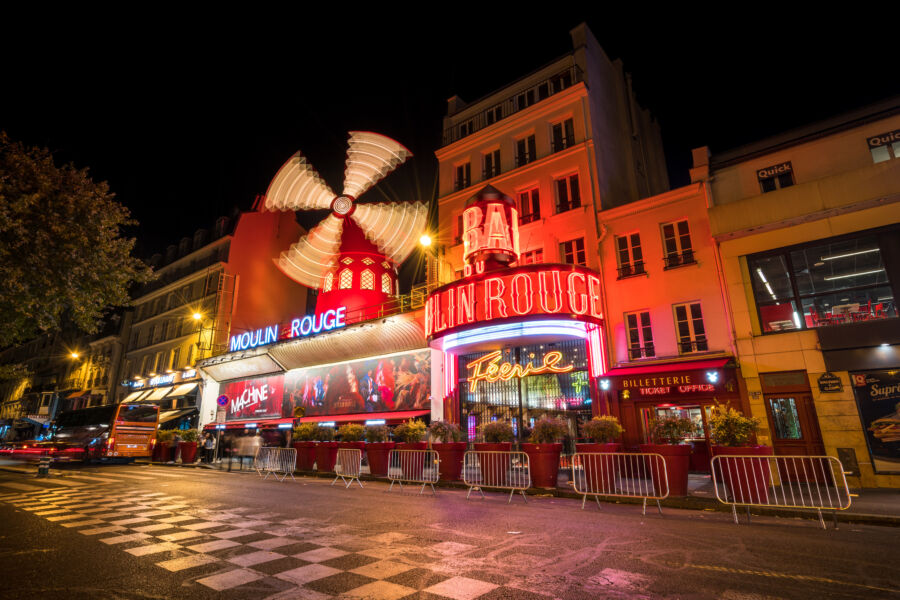
Paris is packed with famous sights and cultural gems. Staying safe while exploring them just takes a bit of street smarts and preparation. Let’s look at how to enjoy the city’s top spots securely.
Safety Around Iconic Landmarks
The Eiffel Tower and Louvre are must-sees, but they also attract pickpockets. Keep valuables close and be aware of your surroundings. At the Eiffel Tower, watch for scammers trying to sell cheap trinkets or “find” lost rings.
The Arc de Triomphe offers great views, but crossing to it can be tricky. Use the underground passages instead of dodging traffic. Lines for attractions can be long – book tickets ahead when possible to spend less time waiting outside.
Crowded areas need extra care. Use inside pockets or money belts. Don’t set bags down or leave phones on tables. Stay alert, especially in busy spots or on public transport to and from sights.
Staying Safe While Enjoying Parisian Culture
Paris brims with art and culture in areas like Le Marais and Saint-Germain-des-Prés. These lively neighborhoods are fun to explore but can get packed.
At night, stick to well-lit main streets. Keep an eye on belongings in busy cafes or galleries. If you’re seeing a show, arrive early to get settled and scope out exits.
Free museum days are great but super crowded. Pick a paid day for a calmer visit if possible. When out late, know the last Metro times or have a taxi app ready.
Be smart with cameras and phones. Don’t wave them around or leave them out. Put away map apps when not needed to blend in more.
Shopping and Dining: Keeping Valuables Secure
Paris is famous for food and fashion. Enjoying both safely just takes some care. In restaurants, keep bags on your lap or between your feet. Don’t hang purses on chairs.
At outdoor cafes, keep an eye on your stuff. Thieves can grab items quickly. When shopping, be careful with wallets and credit cards. Crowded stores make easy pickings for nimble hands.
Spread out valuables in different pockets. Use ATMs inside banks when possible. Save splurges for the end of the trip to avoid carrying lots of gear.
Watch for fake designer goods in touristy areas. Buy from real shops to avoid issues.
Accommodations and Neighborhood Safety

Paris has many great places to stay, but picking the right spot matters for feeling safe and comfy. Let’s look at the best areas and ones to skip.
Choosing the Safest Places to Stay
The 6th arrondissement is a top pick for safe spots. Saint-Germain-des-Prés has nice hotels and is close to sights. The Latin Quarter in the 5th is good too. It’s lively but not wild.
The Marais (3rd and 4th) is fun and safe. Lots of shops and cafes make it feel alive day and night. For a quieter vibe, try the 7th near the Eiffel Tower. It’s fancy and calm.
Pro tip: Book hotels on main streets. They’re usually safer than tiny alleys.
Identifying and Avoiding Dangerous Areas
Some parts of Paris can be iffy, especially at night. The 18th, 19th, and 20th can get rough. Stick to busy streets if you’re there.
Gare du Nord is a big train station. It’s okay in the day, but it can get sketchy after dark. Be extra careful with your stuff there. Parts of the 10th can be dodgy, too. Watch out near Canal Saint-Martin at night.
Smart move: Ask your hotel about safe routes before you head out. They know the area best.
Environmental Factors and Natural Events
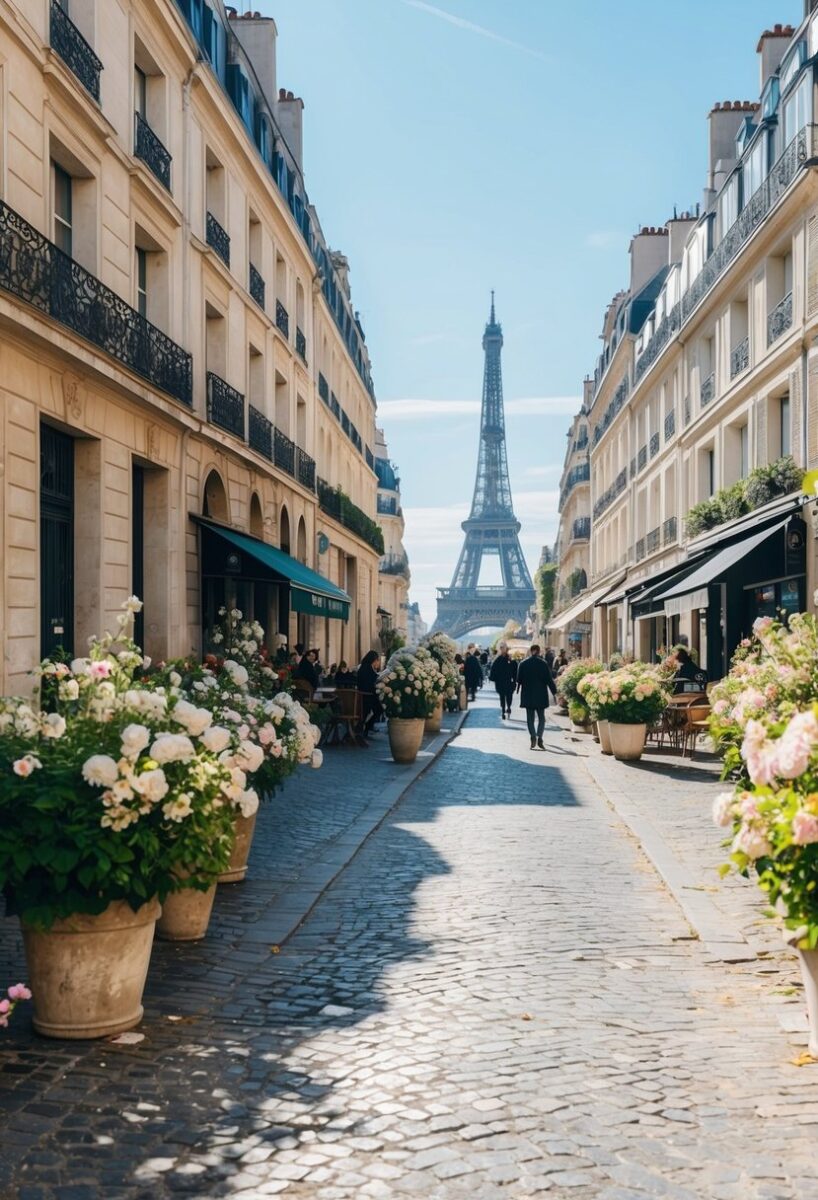
Paris generally enjoys a mild climate, but some weather and natural events can affect visitors. Being prepared helps ensure a safe and enjoyable trip.
Dealing with Weather and Natural Disasters
Paris has a temperate climate with warm summers and cool winters. Summer heat waves can be intense, with temperatures sometimes reaching over 100°F (38°C). The city has set up cool spots and water stations during these times. Visitors should stay hydrated and seek shade.
Winters are usually mild, but occasional cold snaps happen. Snow is rare but can cause transport issues when it does fall. Pack warm layers just in case.
Flooding is the main natural disaster risk in Paris. The Seine River has overflowed its banks several times in recent years. While major flooding is uncommon, it can disrupt travel and close some attractions near the river.
Emergency Preparedness and Responses
Paris has good emergency systems in place. The city uses sirens, TV, radio, and social media to warn about severe weather or other hazards. Visitors should pay attention to these alerts.
For any emergency, dial 112. This number works across Europe and connects to police, fire, or medical services. It’s smart to save this number in your phone before traveling.
Paris hospitals provide quality care, but travel insurance is recommended to cover any medical costs. Pharmacies are common and can help with minor health issues.
Tourists should also note the locations of their embassy or consulate in case they need assistance during an emergency.
Planning Your Parisian Visit
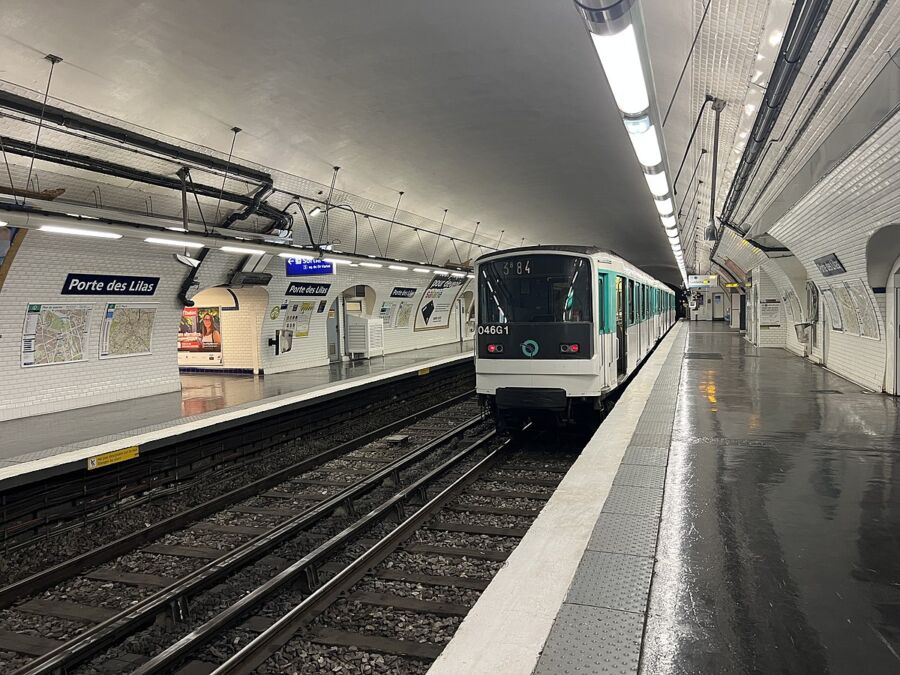
Paris is a fantastic city to explore, but smart preparation can improve your trip. Let’s look at the best times to visit and some key health and safety info to remember.
Best Time to Visit for Optimal Safety
Spring and fall are great seasons to visit Paris. The weather is mild, and there are fewer tourists around. This means shorter lines at attractions and less crowded streets. April to mid-June and September to November are ideal.
Summer can get busy and hot, and pickpockets are more active when it’s crowded. Winter is quieter, but some attractions may have reduced hours.
Avoid visiting during big events unless you’re there for them. The city gets packed, and prices go up. Check the Paris events calendar before booking your trip.
Understanding Local Health and Safety Standards
Paris has good health and safety standards. The tap water is safe to drink, saving you money on bottled water. Public hospitals provide quality care, but travel insurance is still a smart idea.
Most restaurants follow strict food safety rules. Street food can be yummy, but for the freshest eats, stick to busy stands with high turnover.
Public transport is generally safe, even at night. Still, stay alert in busy areas and keep an eye on your stuff. Pickpocketing is the most common crime tourists face.
Paris has smoking bans in public spaces. This includes restaurants and bars. It’s good news for non-smokers but might bug smokers used to lighting up anywhere.
Frequently Asked Questions

Paris is generally safe for tourists, but it’s smart to take some precautions. Here are answers to common questions about staying safe in the City of Light.
What precautions should one take when traveling in Paris?
Tourists should keep an eye on their belongings in crowded areas. It’s a good idea to use a money belt or inside pocket for valuables. Staying aware of surroundings and avoiding flashy displays of wealth can help too.
It’s also wise to research neighborhoods before visiting. Some areas might be less safe at night. Keeping emergency numbers handy is another smart move.
How does the safety of Paris compare to other major cities like New York?
Paris and New York have similar safety levels overall. Both cities deal with petty crime like pickpocketing. Violent crime rates are low in tourist areas of both places.
Paris might have an edge in some ways. Its public transport system is often seen as safer than New York’s subway. But both cities are pretty safe for visitors who use common sense.
In what ways can solo female travelers ensure their safety in Paris?
Solo female travelers can stay safe by trusting their instincts. If a situation feels off, it’s best to leave. Staying in well-lit areas at night is smart.
Joining group tours or meeting other travelers can be fun and safe. Using reputable ride-sharing apps instead of hailing taxis on the street is another good tip.
Are there any specific areas of Paris that are safer to reside in?
Some of the safest areas to stay in Paris include the 1st, 4th, 5th, 6th, and 7th arrondissements. These central districts have lots of tourists and good lighting at night.
The 16th arrondissement is known for being quiet and safe. It’s a bit farther from the main sights but has a peaceful vibe. The Marais (3rd and 4th) is lively and generally safe too.
How has Paris addressed safety concerns regarding terrorism in recent years?
Paris has stepped up security measures since past incidents. There’s more police presence at major landmarks and events. Bag checks are common at museums and big attractions.
The city has also improved its emergency response systems. While no place is 100% safe, these efforts have made Paris safer for residents and visitors alike.
What are the best practices for exploring Paris safely after dark?
A good rule for nighttime exploring is sticking to well-lit main streets. It’s also smart to plan routes ahead of time to avoid getting lost in unfamiliar areas.
Using official taxis or ride-sharing apps is safer than walking long distances late at night. Keeping valuables out of sight and staying alert can help prevent issues too.
